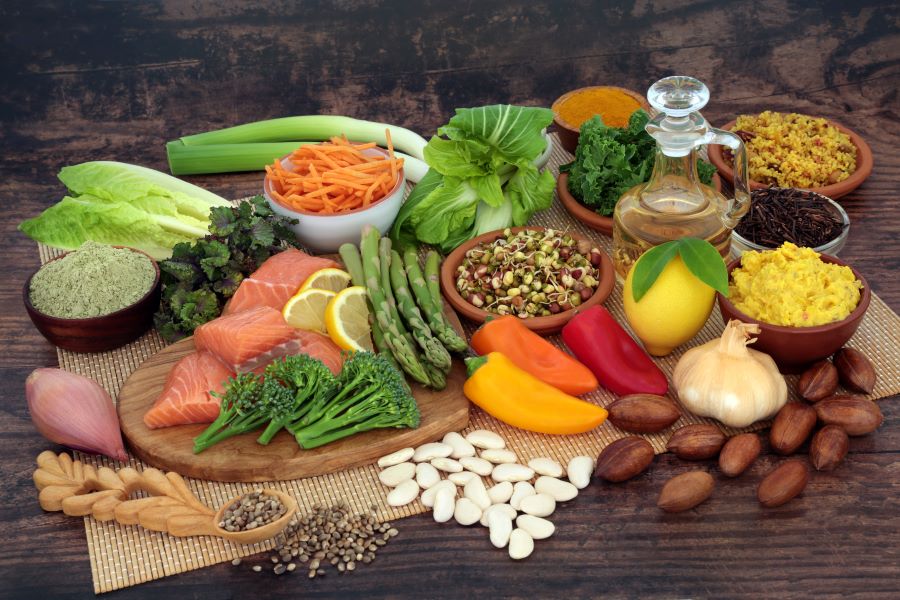Global Pantry Staples That Expand Home Cooking Options
A thoughtfully stocked pantry broadens what you can prepare at home, offering foundations for diverse recipes across cuisines. Global staples—grains, preserved goods, spices, and ferments—support quick meals, deliberate menu planning, and sustainable choices while enhancing nutrition and flavor variety.

Global Pantry Staples That Expand Home Cooking Options
A thoughtfully stocked pantry broadens what you can prepare at home, offering foundations for diverse recipes across cuisines. Global staples—dried legumes, whole grains, preserved vegetables, aromatic spice blends, and basic ferments—support quick meals, deliberate menu planning, and sustainable choices while enhancing nutrition and flavor variety. With a few core items on hand, you can assemble soups, bowls, sauces, and snacks that reflect different culinary traditions without long shopping lists. Below are practical categories and strategies for selecting pantry staples that expand cooking options in an accessible, eco-conscious way.
How can pantry staples inspire recipes and menu planning?
Pantry staples let you develop recipes on the fly and build weekly menus efficiently. Items like canned tomatoes, bulgur, pasta, and a variety of dried beans serve as multipurpose bases: a single legume can become hummus, curry, or a hearty stew depending on spices and liquid used. Menu planning that starts from core pantry items reduces food waste and shopping frequency. Planning around those staples helps pair them with seasonal produce and proteins to create balanced meals, so you can construct breakfast, lunch, and dinner plans using the same foundational ingredients in varied ways.
Which global cuisine staples are most versatile and how does sourcing matter?
Certain staples translate across cuisines and make experimentation simpler. Garbanzo beans, canned coconut milk, soy sauce or tamari, dried chili flakes, and jarred preserved lemons are useful in many contexts. Sourcing matters: opt for ethically produced spices, locally milled grains, or reputable brands for fermented condiments to support sustainability and flavor integrity. Choosing whole forms (like whole spices) often yields fresher taste, while buying some items in bulk reduces packaging. Thoughtful sourcing complements culinary exploration and can align pantry choices with local availability and sustainability goals.
How do fermentation and zero-waste practices boost pantry value?
Fermentation introduces concentrated flavor and potential gut-friendly microbes; staples like miso, sauerkraut, kimchi, and plain yogurt add depth and umami to dishes without elaborate prep. Fermented condiments can transform simple recipes into layered dishes with small amounts. Zero-waste techniques—making stock from vegetable scraps, repurposing stale bread into croutons or breadcrumbs, and preserving excess fruit—extend ingredient life and increase resource efficiency. These practices lower food costs and improve nutrition by ensuring more of the edible food makes it to the plate.
How can plant-based staples support nutrition and meal variety?
A plant-based pantry emphasizes whole grains, legumes, nuts, seeds, and fortified plant milks to create nutrient-complete meals when combined thoughtfully. Combining beans with grains supplies complementary amino acids, and seeds or nut butters add healthy fats and texture. Fortified products can help cover micronutrient needs that are harder to obtain from plant foods alone. Rotating different beans and grains across the week prevents monotony and diversifies micronutrient intake, supporting both nutrition and appetite satisfaction while keeping meals plant-focused.
How do seasonality and sustainability influence what you keep?
Seasonality steers which pantry items pair best with fresh produce at different times of the year. In summer, lighter staples such as couscous, chilled noodle salads, and jars of pickled vegetables complement fresh tomatoes and cucumbers. In cooler months, resilient staples like barley, farro, and rich tomato preserves suit roasted root vegetables. Sustainability considerations—such as choosing minimal packaging, buying local where feasible, and preferring fair-trade spices—can reduce environmental impact. Bulk purchases and resealable containers also help limit waste and maintain ingredient quality.
How can pantry items aid pairing and at-home mixology?
Pantry staples support both food pairing and simple mixology. Basic syrups infused with citrus peel, ginger, or herbs extend beverage options; shrubs (vinegar-based fruit syrups) and preserved fruits add acidity and complexity to cocktails and mocktails. For food pairing, toasted seeds, pickled elements, and spice blends provide texture and contrast to soft proteins and grains. Thinking about flavor families—citrus with coriander, sesame with soy, or preserved lemon with herbs—helps create cohesive menus that connect beverages and dishes without elaborate prep.
A strategic pantry stocked with globally inspired staples widens home cooking possibilities by enabling adaptable recipes, supporting plant-based and nutritionally balanced meals, and encouraging sustainable, zero-waste practices. Prioritizing versatile items and mindful sourcing lets you experiment across cuisines, refine pairings, and streamline menu planning, all while getting more from the ingredients you already have.





